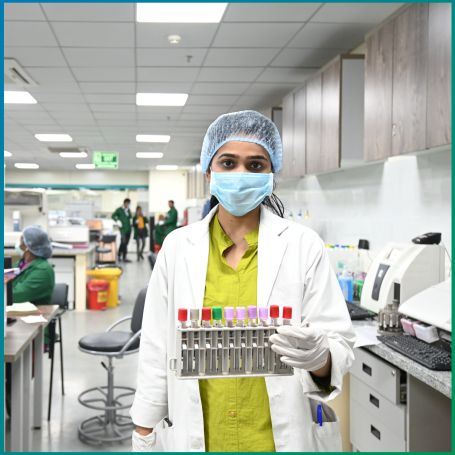
Digoxin is a cardiac glycoside derived from the leaves of the Digitalis purpurea plant, commonly known as foxglove.


It works by inhibiting the Na+/K+ ATPase pump, leading to an increase in intracellular sodium and calcium levels. This results in enhanced myocardial contractility, decreased heart rate, and improved cardiac output. Because of its potent effects on the heart, monitoring serum digoxin levels is essential to avoid potential complications, especially given the drug's narrow therapeutic window.
The digoxin test is a crucial diagnostic tool used primarily to monitor patients who are receiving digoxin, a medication commonly prescribed for heart conditions such as atrial fibrillation and heart failure. This test helps ensure that the serum digoxin levels remain within a therapeutic range to achieve optimal benefits while minimizing the risk of toxicity.
The primary reason for performing a digoxin test is to monitor serum digoxin levels in patients who are on digoxin therapy. The following factors highlight its significance:
1] Therapeutic Monitoring - Digoxin has a narrow therapeutic index, meaning the range between a therapeutic dose and a toxic dose is small. Normal digoxin levels in the blood usually range from 0.5 to 2.0 ng/mL. Levels below this range may be ineffective, while levels above this range can lead to toxicity. Regular monitoring helps adjust doses to maintain effective levels.
2] Detecting Toxicity - Digoxin toxicity can occur, especially in patients with renal impairment, dehydration, or those taking certain medications that interact with digoxin. Symptoms of toxicity include nausea, vomiting, confusion, visual disturbances, and arrhythmias. The digoxin test aids in identifying elevated serum digoxin levels, allowing for timely intervention.
3] Assessing Patient Compliance - Frequent testing can also help assess patient compliance with prescribed therapy. If digoxin levels are consistently low, it may indicate that the patient is not taking the medication as directed, prompting further investigation and counselling.
1] Normal Digoxin Levels - The normal digoxin level is generally between 0.5 and 2.0 ng/mL. Values within this range are typically considered therapeutic, indicating that the patient is likely receiving an effective dose of the medication without adverse effects.
2] Low Digoxin Levels - <0.5 ng/mL: Levels below this range suggest that the patient may not be receiving an adequate dose of digoxin. This could result in insufficient therapeutic effects, such as uncontrolled heart rate or worsening heart failure symptoms.
3] High Digoxin Levels - >2.0 ng/mL: Elevated serum digoxin levels indicate potential toxicity. Patients with high levels may experience symptoms of digoxin toxicity, necessitating immediate medical evaluation. Depending on the situation, the healthcare provider may recommend reducing the digoxin dose, temporarily discontinuing the medication, or administering an antidote.
You should choose Diagnopein for your DIGOXIN test because we are committed to providing high-quality diagnostic care in a clean and hygienic environment. Our center is equipped with advanced technology to ensure accurate and reliable test results, which are crucial for assessing this test. Diagnopein’s experienced staff is dedicated to handling tests with precision and care, offering you both expertise and comfort. We also offer affordable pricing, making essential health diagnostics accessible without compromising quality. For timely, professional, and affordable cardiac testing, Diagnopein is your trusted partner for your healthcare.
It is advisable to follow your healthcare provider’s instructions regarding fasting or medication intake before the test. Ensure that you have a complete list of medications you are currently taking for accurate interpretation of results.
Yes, several medications can interact with digoxin and affect its levels, including diuretics, calcium channel blockers, and certain antibiotics. Always inform your healthcare provider of any medications or supplements you are taking.
A healthcare provider will draw a blood sample, typically from a vein in your arm. The sample is sent to a laboratory for analysis, and it’s important to draw blood at the right time, ideally 6-8 hours after your last dose of digoxin.
The test is essential because digoxin has a narrow therapeutic window, meaning the difference between effective and toxic doses is small. Regular testing helps adjust dosages to maintain effective levels and detect any signs of toxicity.